If there’s one thing I’ve learned from years of prepping, it’s that you don’t always need deep pockets to build a solid emergency food stockpile. Some of the best long-lasting food I’ve stored came straight from food banks—yes, the same places many folks overlook or feel hesitant to visit.
Let me set the record straight: food banks aren’t just for people in crisis. Many of us in the preparedness community use them wisely, especially when budgets are tight or during times of economic downturn. When inflation hits, shelves run low, or your paycheck doesn’t go as far as it used to, food banks can be a lifeline not just for today but for building up tomorrow’s security.
I’m going to show you 10 long-lasting foods you can get from food banks, how to stockpile them smartly, how to preserve them properly, and how to work these items into your larger preparedness strategy. Every item listed here has been chosen based on actual availability, longevity, and nutritional value.
Canned Vegetables
 Canned green beans, corn, carrots, peas—I’ve picked them all up from food banks over the years. These are staples in most food pantries because they’re affordable, non-perishable, and packed with essential nutrients like Vitamin A, fiber, and potassium. They’re also easy to prepare and incredibly versatile in recipes ranging from soups to casseroles.
Canned green beans, corn, carrots, peas—I’ve picked them all up from food banks over the years. These are staples in most food pantries because they’re affordable, non-perishable, and packed with essential nutrients like Vitamin A, fiber, and potassium. They’re also easy to prepare and incredibly versatile in recipes ranging from soups to casseroles.
Why they’re great: Canned veggies can last up to 5 years or longer when stored properly. Even after the best-by date, they remain safe as long as the can is intact (no bulging, rust, or deep dents).
How to stockpile:
- Store them in a dark, cool room like a basement or a pantry.
- Use the “first in, first out” (FIFO) method to ensure older cans get used first.
- Stack similar types together and label them clearly for easier rotation.
Preservation tip: If you end up with an excess of canned veggies, consider dehydrating them to save space, especially if your pantry is limited. Alternatively, you can open large cans and pressure-can the contents into smaller mason jars, which are ideal for single servings and reduce waste.
Canned Protein (Tuna, Chicken, Spam)
Protein is a pillar of survival nutrition. I’ve gotten plenty of canned tuna, chicken, ham, and Spam-style meats from food banks. These are excellent sources of long-term, shelf-stable protein that require no refrigeration until opened. They’re also great for boosting the nutritional value of carbs like rice and pasta.
Why they’re great: High in protein and shelf-stable for 3–5 years or more. Perfect for bug-out bags and quick meals during outages.
How to stockpile:
- Keep in a rodent-proof container or plastic tote.
- Label and group by protein type and expiration date.
- Consider vacuum-sealing the cans if storing in a high-humidity area.
Preservation tip: These proteins can be mixed into rice, pasta, or beans to stretch a single can into multiple meals, making them go further. If you’re comfortable with pressure canning, try re-canning the contents into smaller jars or batch cooking stews and then pressure-canning those for quick, shelf-stable meals.
Bonus tip: You can make your own Spam at home if you want a version where you know exactly what went into it. Here’s the full list of ingredients:
- 5 lbs pork shoulder
- 1 lb ham
- 2 tbsp + 1 tsp Tender Quick (order online if your local store doesn’t carry it)
- 3 tbsp sugar
- 3 tbsp cornstarch or potato starch
- 1 tbsp Kosher salt
- 1 cup ice-cold water
The full step-by-step recipe, along with the guide on how to get 295 pounds of extra food for just $5 a week, is available here.
Rice
White rice shows up in many food bank distributions, often in bulk bags. It’s calorie-dense, cheap, and versatile. Whether you’re preparing stir-fry, soup bases, or side dishes, rice works well with just about everything.
Why it’s great: Properly stored, white rice can last up to 30 years. It’s a great base for meals and mixes well with just about any protein or vegetable.
How to stockpile:
- Remove from original packaging to avoid pest issues.
- Store in mylar bags with oxygen absorbers inside 5-gallon food-grade buckets.
- Label buckets with type and storage date.
Preservation tip: For smaller amounts of rice, use mason jars with vacuum-sealed lids, which are easier to access and rotate. Always keep buckets off the ground to prevent condensation and moisture from ruining your stash.
Pasta
Pasta is a comfort food and a high-carb staple. It’s also shelf-stable and often handed out in generous portions at food banks. It cooks quickly and can be combined with nearly any sauce, veggie, or protein for a hearty meal.
Why it’s great: Dried pasta can last 10+ years when stored correctly. It cooks quickly and pairs with nearly anything.
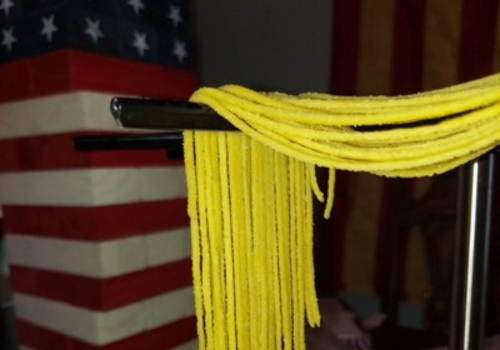
How to stockpile:
- Transfer from cardboard boxes into airtight containers.
- Mylar bags with oxygen absorbers work best for long-term storage.
- Store in a dry place away from sunlight and humidity.
Preservation tip: To make meals more prepper-friendly, you can pre-cook and then dehydrate pasta. This creates a lightweight, quick-rehydrate option perfect for hiking, bug-out bags, or emergency situations when boiling water is limited.
Dry Beans
Dry beans are protein-rich, fiber-heavy, and shelf-stable. You can often get pinto, black, navy, or lentils in bulk from food bank donations. They’re also highly nutritious and form the backbone of many survival recipes.
Why they’re great: When stored properly, dry beans last up to 30 years. They’re nutrient-dense and filling.
How to stockpile:
- Vacuum-seal or use mylar bags with oxygen absorbers.
- Store in food-grade buckets or bins with screw-top lids.
- Keep cool and dry.
Preservation tip: You can soak and pressure-can beans in quart or pint jars to create ready-to-eat protein sources. Another option is to grind cooked beans into flour, which can then be added to soups or used as a thickener for stews and gravies.
>> The Under $1 Walmart Canned Goods You Absolutely Need to Add to Your Food Reserves
Peanut Butter
Peanut butter is rich in calories, healthy fats, and protein. It’s beloved by kids and adults alike and is almost always included in food bank boxes. It’s easy to eat right off the spoon or mix into baked goods and smoothies.
Why it’s great: An unopened jar can last 1–2 years past the printed date if stored properly. It’s a morale booster and high-energy snack.
How to stockpile:
- Store jars in a cool cabinet or in a special cellar.
- Keep away from direct sunlight or heat.
Preservation tip: Rotate your peanut butter stash every six months to ensure it stays fresh and avoid oil separation. For true long-term storage, consider stocking powdered peanut butter, which can last up to five years and be reconstituted as needed.
Oats and Instant Oatmeal
Oats are easy to prepare, fiber-rich, and comforting. I’ve gotten both instant packs and bulk rolled oats from food banks. They’re ideal for breakfast, baking, and even making oat-based protein bars.
Why they’re great: Stored in a dry, airtight container, oats can last 20+ years.
How to stockpile:
- Vacuum-seal or store in mylar with oxygen absorbers.
- Label and keep in a temperature-controlled pantry or closet.
Preservation tip: Mix oats with dried fruit, cinnamon, and brown sugar to pre-make individual oatmeal kits. These can be vacuum-sealed into single-serving bags for fast breakfasts or included in bug-out kits.
Powdered Milk
 While not always common, powdered milk does show up occasionally in food pantry shipments. It’s one of the most useful dairy substitutes in a grid-down scenario. You can use it in baking, sauces, or reconstituted for drinking.
While not always common, powdered milk does show up occasionally in food pantry shipments. It’s one of the most useful dairy substitutes in a grid-down scenario. You can use it in baking, sauces, or reconstituted for drinking.
Why it’s great: When sealed properly, non-fat powdered milk can last 20 years.
How to stockpile:
- Keep in vacuum-sealed bags or airtight jars.
- Protect from moisture, light, and heat.
Preservation tip: Store powdered milk in small, manageable portions to minimize exposure during use. Combine it with oats and dried fruit to create a complete emergency breakfast mix that just needs hot water.
Boxed Meals (Mac & Cheese, Pasta Sides)
Quick-prep boxed meals like mac and cheese or pasta sides are a common pantry handout. They may not be gourmet, but they fill bellies and are easy to prepare. Add canned meat or veggies to turn them into full meals.
Why they’re great: These meals can last 2–3 years if kept dry. Add canned meat or veggies to stretch them.
How to stockpile:
- Keep in dry totes or bins.
- Remove any inner foil packets and store separately if needed.
Preservation tip: Repackage boxed meals into mylar bags with desiccants to extend their shelf life significantly. Make sure to include the preparation instructions when repackaging.
Canned Soups and Stews
Hearty soups and stews—especially beef stew, chili, or chicken noodle—are often in heavy rotation at food banks. They’re ready to eat, calorie-dense, and comforting. Perfect for cold nights or days when cooking isn’t an option.
Why they’re great: Canned soups last 5+ years, even longer if stored correctly.
How to stockpile:
- Store upright in labeled rows.
- Keep similar soups grouped together.
Preservation tip: Older canned soups can be used as a flavorful base for more complex meals. Try pouring them over cooked rice, pasta, or dried vegetables to extend the serving size and boost nutrition.
>> How to Preserve Meat in Lard in Mason Jars for Over 2 Years Without Refrigeration
How to Get These Foods from Food Banks
Food banks operate in nearly every U.S. county. Many are part of larger networks like Feeding America or are run by churches and nonprofits.
Tips for visiting food banks as a prepper:
- Find local pantries: Search online or use websites like feedingamerica.org and foodpantries.org to locate services near you.
- Understand eligibility: Some pantries ask for income info, others don’t. Many are open to anyone needing help.
- Arrive early: Supplies can run out fast. Go early in the distribution window.
- Bring your own bags or boxes: Makes it easier to carry bulk items.
- Ask questions: Some volunteers know when bulk items are coming in or which days are best for certain goods.
- Be respectful: Don’t abuse the system. Many of us prepping on a budget use these services responsibly.
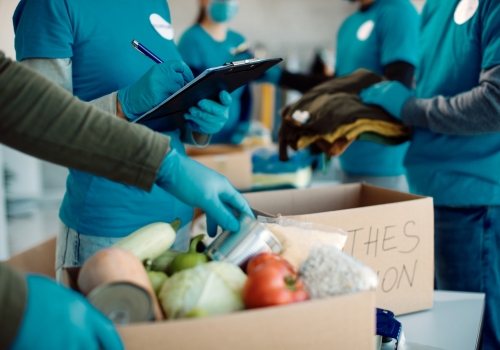
Stretching Your Stockpile Further
Even small hauls from food banks can turn into massive food security if you plan well.
- Create a rotation schedule: Check your inventory every 3 months. Eat oldest first.
- Preserve extras: Learn to dehydrate, vacuum seal, or pressure can anything you get in surplus.
- Batch cook: Make meals ahead of time using pantry goods, then freeze or can for grab-and-go use.
- Diversify storage: Use under-bed bins, closets, and even garage shelves to spread out your stash.
- Barter and trade: If you have an overstock of rice, maybe a neighbor has extra beans. Build community.
Stockpiling from food banks takes a bit of humility and a whole lot of wisdom. You’re not just feeding yourself today—you’re building a buffer for the future. Whether you’re prepping for a job loss, economic collapse, or the next natural disaster, these humble food items are more powerful than they look.
So next time you pass a pantry or see a local food drive, think twice. You might just find the missing piece to your long-term food plan.
Stay alert. Stay stocked.
After securing your long-term food supplies, you need to make sure you also have access to clean water in sufficient quantity. Great budget-friendly solutions you can rely on include this backpack-sized water generator and The Water Freedom System. For only $0.21 per day, you can get access to clean water in amounts large enough for your entire family.
You may also like:
5 Long-Lasting Recipes Every Prepper Should Master (With Pictures)
This is How to Turn Just About Any Food Into a Long-Lasting One (Video)

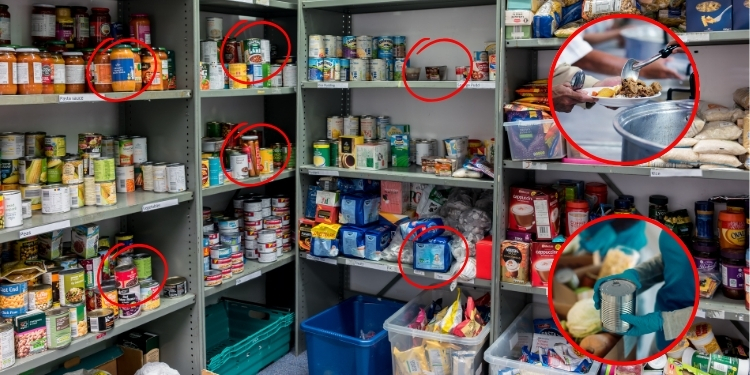
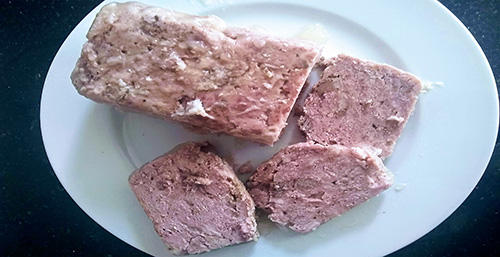








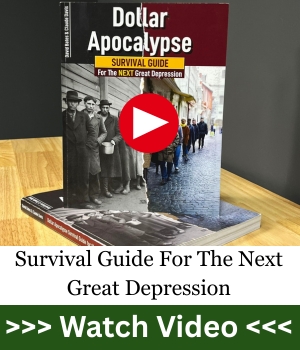
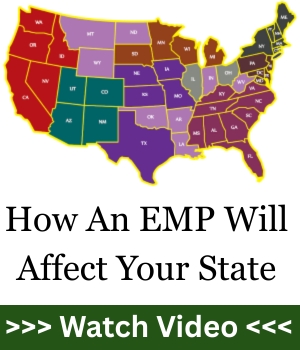


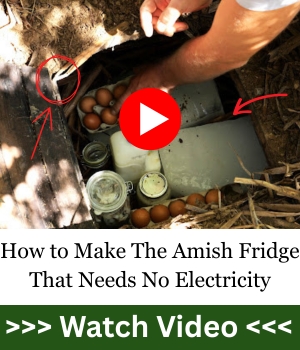








not to long ago i opened a jar of peanut butter that was 6 years expired. it was good and i ate the whole jar( not all at once). i only buy spaghetti in plastic bags, not in boxes. its on sale alot for .90 cents a bag. i put several bags in a ziplock bag and it keeps a long time. mac and cheese i take out of the box and seal-a-meal them with 2 boxes and instructions in each bag. this was a good informative article.
That’s great to hear! Sounds like you’ve built a smart system for making food last while keeping it fresh and safe. Love the idea of sealing pasta and mac & cheese with the instructions, practical and organized. Thanks for sharing your tips!
Poot is right about peanut butter ( and a lot more).
in 1980 we ate canned peanut butter left over from the Korean WAR ( conflict). it was hard as rock upon opening, my Dad knew it would be, so ahead of time he picked up some peanut oil. took some time to mix in just a little peanut oil, but SMOOTH and CREAMY , it was.
Tasted great, even better when you knew the price. He got 2 or 3 BIG cans, possibly 5 lbs each. Wish we all could get 100 cans of that right now, free.
Got some Wolf brand chili that is 10 yrs past and still good today.
If you take care of your supplies, your supplies will take care of you..
stay sharp
red ant
Not the healthiest thing in the world, but pop tarts last a long time. Especially unfrosted. They’re in a mylar pouch already, so you can just stack em in a covered 5 gallon. 5+ years guaranteed. Good way to get hi-calories/energy in a shtf sitch without cooking. And you Could eat on the go, etc.
Problem is, you might have to eat the poptarts.
Might not be any better than the south end of a north bound skunk
PS my step son had to give a statement in open court about 5 yrs ago
He concluded with, “oh yeah, Epstein didnt kill himself” The Judge laughed, along with the rest of the court room.
This has to do what, regarding this article????
That’s a great point about shelf-stable, high-calorie options. The convenience of a no-cook food that’s also portable is definitely a key factor in an emergency. The mylar packaging is a huge plus for longevity, too. Thanks for your comment!
Articles always mention beans as being high in protein. BUT all beans need to be mixed with a grain: rice, wheat, oats, etc, to make a complete protein.
Thanks for bringing up the complete protein issue. It’s an important distinction to make. While beans are a fantastic source of protein on their own, combining them with a grain like rice is a smart strategy to get all the essential amino acids.
Great article…the past month I’ve been diving into the internet about what a good healthy meal should be for the day. As far as calories, protein, fiber, and also water and getting data on weeds , fruits , nuts , etc….alot to learn. Then there’s the identification ,preparing, storing,etc..and trying to gear it all to a shtf scenario….makes my head spin…but it seems to be a fun and practical ride to be on.Understanding our body and it’s needs might be number one on our list for prepping other than finding God ..to which i believe is the reason were hear….Just my opinion….
It’s great to hear you’re enjoying the learning process! It can certainly feel overwhelming at times with everything from nutrition to foraging and long-term storage, but it sounds like you’re on the right track. Taking it one step at a time is the best approach.
Next time You’er at the big-box supermarket or local grocery store, check out what you are buying to eat now or store for later on the JURA App. It’s free. Just scan the item’s barcode and know before you spend your hard earned cash on items you might want to think twice about! It’s a real eye-opener!
Of all times to make a typo! It should be the -YUKA App! 🙄
your forgiven, just hope the English Prof doesnt spot the post
ps ‘ ommitted on purpose, same reason second M was added
That’s a fantastic tip for checking out products on the fly. Knowing exactly what’s in the food you’re buying, whether it’s for immediate use or for your long-term stockpile, is a smart way to make informed decisions. Thanks for sharing the recommendation!
You’er welcome. My son shared this with me after a doctor friend told him about it, and although I always tried to do my best in the kitchen, using this app, I quickly realized some of my choices were not the best!
One of the cool features on this particular app, is that it enables you to do something about it! If a product has ingredients that have been found to be unhealthy, it gives you other choices to consider buying, and if it’s really really bad for your health, there is a feature that enables you can easily send an email to the product’s manufacturer and give them a big piece of your mind! I think that’s brilliant!
Hopefully, after hearing from enough of us, they will then make the appropriate
changes, and that can only help all of us shop with confidence in the future and know that when we purchase an item at the grocery store, we are putting the best on the table for our families.
Do not go to a foodbank to stock your prepper pantry! Those foodbanks are for families that are seriously food-challenged. They aren’t prepping for tomorrow – they are trying to survive today! That askaprepper.com would recommend this, is atrocious!
Anyone who is truly in need, should apply for Federal Benefits. It’s a SNAP! The funding for all of these local food pantries is actually drying up, so they will soon close down anyway.
Why not? Food pantries are open to anyone. Anyone who is truly in need, should apply for Federal Benefits. It’s a SNAP! The funding for all of these local food pantries is actually drying up, so they will soon close down anyway.
Sure you can go to the food banks. But should you? If you are stockpiling you probably have enough money to purchase the products yourself.
If you are in the margin or below the federal level then by all means!
I know a few people who use the food bank just because it’s free. It really ticks me off because I live in an area where kids some 5,000 + don’t have shoes. So if you want to go get food from a food bank and can afford it while there are many that can’t, then you need a long look in the mirror. Ask yourself if you can stand in front of God and say you were a good person.
Well, its like this, poor people SHOULD also prep, not just the wealthy.
If you can afford, you should afford. BUT everyone should have SOME stored for emergency.
Where is the dividing line ? thats between YOU and GOD, I hope you choose correctly, but I dont think its for me to judge – unless I see your expensive car. Ice storm etc, dont expect me to come save you, but your own reserves should get you thru a few weeks. Meanwhile, the poor should read and pay attention to the live off the land and save money portions. Almost wherever you live, nature provides some bounty, if you know what to look for.
STAFF ! how about a FEW articles on what to eat for free from the trail near you. Like Poke salad, and how to eat it SAFELY. Skip the blackberries, too obvious.